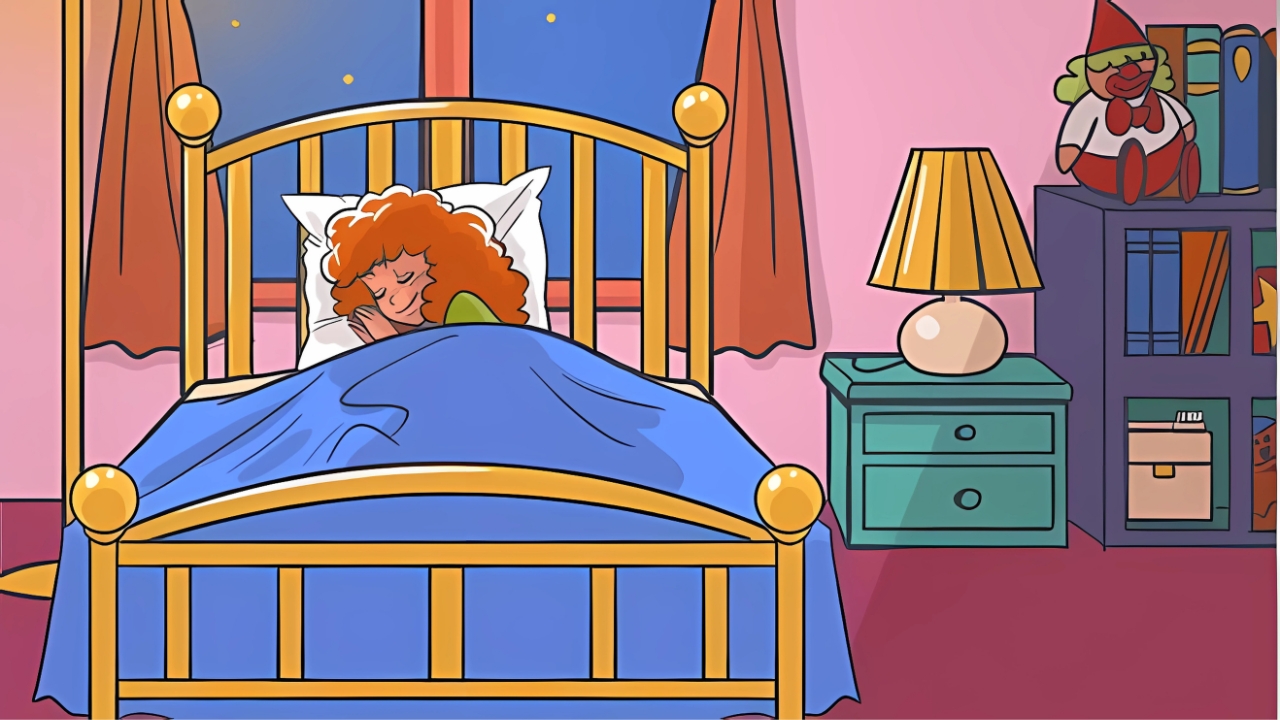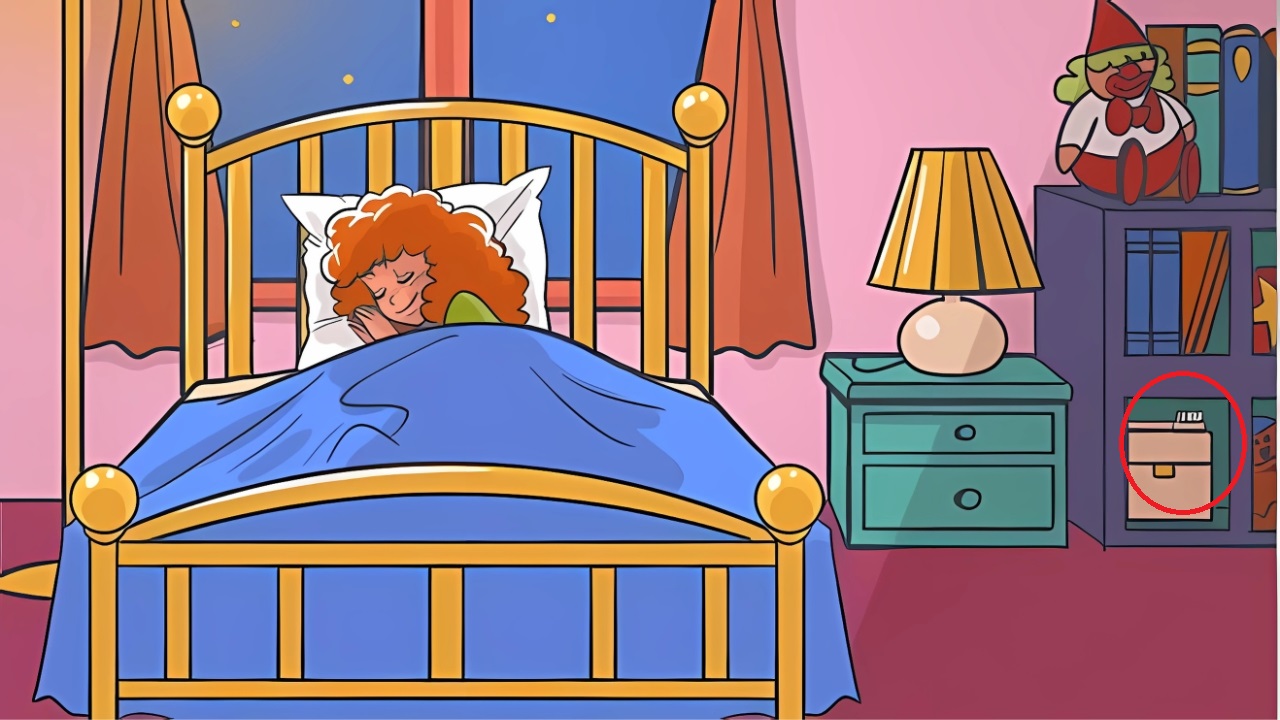Optical Illusion Challenges Finding Hidden Toothbrush : The human brain processes visual information at an extraordinary rate, yet it can be easily fooled by cleverly designed images.
Optical illusion challenges, such as finding a hidden toothbrush within a complex scene in just five seconds, have captivated millions of people worldwide. These visual puzzles reveal fascinating insights into how our minds interpret the world around us and why sometimes what we see isn’t exactly what’s there.
Understanding the Foundation of Visual Perception
Visual perception operates through a sophisticated system where our eyes capture light patterns and our brain interprets these signals into meaningful images. This process happens so quickly and automatically that we rarely consider the complex mechanisms at work.
When you look at any scene, your brain doesn’t simply record what’s there like a camera would. Instead, it actively constructs reality based on patterns, expectations, and previous experiences.
The visual cortex, located in the back portion of our brain, processes different aspects of what we see simultaneously. Some neural pathways focus on detecting edges and boundaries, others identify colors and textures, while still others track movement and depth.

This parallel processing system usually works seamlessly, but optical illusions exploit the gaps and shortcuts in this remarkable system.
Consider how your brain handles the task of finding a hidden object in a busy image. Within milliseconds, your visual system must separate the target object from the background, identify relevant shapes and patterns, and distinguish between what belongs to the hidden item versus what belongs to the surrounding elements.
This process becomes exponentially more difficult when the hidden object is camouflaged or integrated into a complex background.
The Psychology Behind Hidden Object Challenges
Hidden object puzzles tap into several fundamental aspects of human psychology and cognition. First, they engage our pattern recognition abilities, which have evolved over millions of years to help us identify important features in our environment quickly.
Our ancestors needed to spot predators hiding in tall grass or locate food sources among dense foliage. These same neural mechanisms now help us find a toothbrush cleverly concealed within a detailed illustration.
Attention plays a crucial role in these challenges. When faced with a complex image, our attention system must decide where to focus first. This decision-making process is influenced by several factors including color contrast, familiar shapes, and areas of high detail.
Skilled puzzle creators understand these tendencies and deliberately place hidden objects in locations that challenge our natural attention patterns.
The time pressure element, such as finding an object within five seconds, adds another psychological dimension. Under time constraints, our brain shifts into a more rapid, automatic processing mode. This can sometimes help us spot patterns more quickly, but it can also cause us to overlook obvious details as we scan too rapidly across the image.
The Neuroscience of Camouflage and Hidden Objects
Camouflage works by exploiting specific vulnerabilities in our visual processing system. Our brains rely heavily on edge detection to identify separate objects in a scene.
When an object’s edges blend seamlessly with the background through similar colors, textures, or patterns, it becomes much harder for our edge detection systems to isolate it as a distinct entity.
The concept of figure-ground segregation explains much of the difficulty in hidden object puzzles. This fundamental visual process involves distinguishing between the main subject (figure) and the background (ground) in any scene.
When a hidden object shares visual characteristics with its background, this segregation process becomes compromised, making the object effectively invisible despite being in plain sight.
Scientists have discovered that different people show varying abilities in these visual search tasks. Some individuals possess superior skills in what researchers term “global processing” – the ability to see the overall pattern or gestalt of an image.
Others excel at “local processing” – focusing on specific details within a larger picture. Hidden object puzzles often require a balance of both skills, which explains why some people consistently outperform others in these challenges.
Cultural and Individual Differences in Visual Perception
Research has revealed fascinating differences in how people from different cultural backgrounds approach visual search tasks. Individuals from Western cultures, which emphasize analytical thinking, often focus on specific objects and details within a scene. In contrast, people from East Asian cultures, which value holistic thinking, tend to pay more attention to context and relationships between elements.
These cultural differences can significantly impact performance on hidden object challenges. A person trained to notice contextual relationships might more easily spot a toothbrush that’s integrated into a bathroom scene, while someone focused on specific details might excel at finding objects that stand out through color or texture differences.
Individual differences in cognitive style also play important roles. Some people naturally employ systematic search strategies, methodically scanning an image from left to right and top to bottom. Others use more intuitive approaches, allowing their attention to be drawn to areas that “feel” promising. Neither approach is superior; both can be effective depending on how the hidden object is concealed.
Age affects visual search abilities as well. Children often outperform adults on certain types of visual puzzles because their visual processing systems are more flexible and less constrained by expectations. However, adults bring greater knowledge and experience to the task, which can help them identify likely hiding spots based on logical reasoning.
The Role of Expectations and Mental Models
Our brains constantly form predictions about what we expect to see in different contexts. These mental models help us process visual information more efficiently but can also create blind spots in hidden object challenges. When searching for a toothbrush, we might unconsciously look for it in bathroom-related contexts or expect it to appear in its typical orientation and size.
Clever puzzle designers exploit these expectations by placing objects in unexpected contexts or presenting them in unusual orientations. A toothbrush might be disguised as part of a fence post, oriented vertically instead of horizontally, or colored to match surrounding elements. These unexpected presentations force our brains to work harder and often result in longer search times.
The phenomenon of “inattentional blindness” also comes into play. This occurs when we’re so focused on searching for one particular thing that we completely miss other obvious elements in the scene. In hidden object challenges, this might mean overlooking the target object because we’re concentrating too hard on a specific search strategy or looking in the wrong areas.
Strategies for Improving Visual Search Performance
Understanding the science behind visual perception can help us develop better strategies for tackling hidden object challenges. One effective approach involves varying your visual search patterns. Instead of always scanning systematically, try alternating between focused detail examination and broader pattern recognition.
Pay attention to areas where different textures, colors, or patterns meet. Hidden objects are often placed at these boundary zones where they can blend partially with multiple background elements. Look for subtle inconsistencies in repeating patterns, as these often indicate where foreign objects have been integrated.
Consider the logical context of what you’re searching for. While objects might be hidden in unexpected places, they’re often still placed in locations that make some logical sense. A toothbrush might be camouflaged in a bathroom scene, integrated into kitchen imagery, or hidden among other cylindrical objects.
Practice shifting between different levels of visual focus. Sometimes stepping back mentally to see the “big picture” can reveal patterns that aren’t apparent when examining details closely. Other times, zooming in mentally on specific areas can help you spot subtle differences that indicate hidden objects.
The Technology Behind Modern Optical Illusions
Contemporary optical illusion challenges benefit from advanced digital design techniques that allow for increasingly sophisticated hiding methods. Digital artists can now seamlessly blend objects into backgrounds using techniques like transparency mapping, texture matching, and color harmony analysis.
Computer algorithms help designers test their puzzles by simulating human visual attention patterns. These tools can predict which areas of an image will draw attention first and help creators place hidden objects in the most challenging positions. Some advanced systems even adjust puzzle difficulty based on user performance data.
The rise of interactive digital puzzles has also introduced new elements like animation and layered reveals. These dynamic features can make objects appear and disappear or shift the visual context in ways that traditional static images cannot achieve.
Benefits of Engaging with Visual Perception Challenges
Regular practice with hidden object puzzles and optical illusions provides several cognitive benefits. These activities strengthen visual attention skills, improve pattern recognition abilities, and enhance overall cognitive flexibility. For older adults, engaging with these challenges may help maintain visual processing speed and accuracy.
Educational applications of these principles extend beyond entertainment. Teachers use hidden object activities to develop observation skills in students, while researchers employ similar techniques to study attention disorders and visual processing difficulties.
Optical Illusion Answer

The problem-solving aspects of these challenges also provide mental exercise that can be both enjoyable and beneficial. The satisfaction of successfully finding a well-hidden object triggers positive reinforcement that encourages continued engagement with challenging visual tasks.
The Future of Optical Illusion Challenges
As our understanding of visual perception continues to advance, we can expect increasingly sophisticated optical illusion challenges. Virtual and augmented reality technologies offer new possibilities for creating immersive hidden object experiences that respond to user behavior and adapt difficulty in real-time.
Artificial intelligence is beginning to play a role in both creating and solving these puzzles. Machine learning algorithms can analyze thousands of images to identify the most effective hiding techniques, while also developing new methods for concealing objects that challenge both human and artificial visual systems.
Research into individual differences in visual perception may eventually lead to personalized puzzle experiences that adapt to each person’s unique cognitive strengths and weaknesses. This could make these challenges more accessible to people with different visual processing abilities while maintaining appropriate difficulty levels.
The enduring popularity of optical illusion challenges demonstrates the fundamental human fascination with perception and the limits of our sensory experience. Whether you find that hidden toothbrush in five seconds or take considerably longer, engaging with these visual puzzles offers a window into the remarkable complexity of human consciousness and the beautiful imperfections in how we see the world around us.
These challenges remind us that perception is not passive reception but active construction, shaped by our biology, psychology, and experience. In an age where we’re constantly bombarded with visual information, understanding these principles becomes increasingly valuable for navigating our complex visual world.